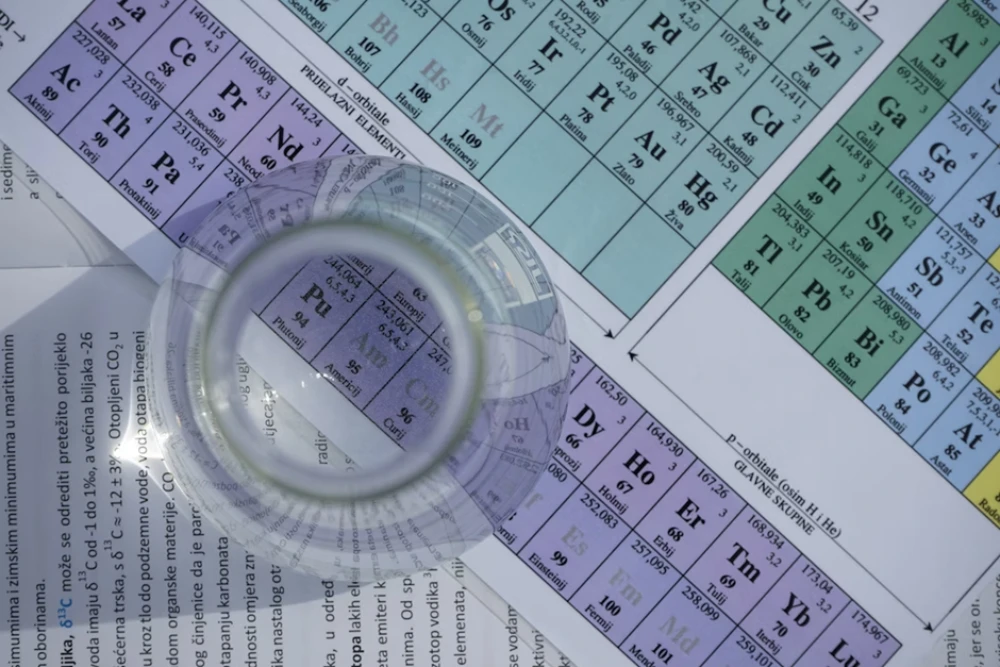A catalyst is a substance that increases the rate of a chemical reaction without being consumed. Understanding the different types of catalysts is crucial for selecting the right one in industrial applications.
In this article, we provide a comprehensive and practical exploration of what catalysts are, how different types function, and how to select the right catalyst for specific industrial applications.
What Are Catalysts?
Catalysts are indispensable substances in both industrial and biological systems. They work by lowering the activation energy required for a reaction, thus speeding up chemical transformations while emerging unchanged at the end of the process.
Importantly, catalysts do not affect the thermodynamic equilibrium of a reaction, they only alter the kinetic pathway by providing a more favorable route.

Photo: Wikimedia
A catalyst’s performance is often characterized by several key parameters:
- Activity: The ability of a catalyst to increase the reaction rate.
- Selectivity: Its capacity to produce the desired product preferentially over undesired ones.
- Stability and lifetime: The duration for which a catalyst remains active before deactivation.
- Regenerability: Whether it can be reactivated or reused after use.
These metrics collectively define a catalyst’s industrial viability.
Catalysts can be classified in several ways:
- By phase or physical state: Homogeneous (same phase as reactants) vs. heterogeneous (different phase).
- By chemical composition or nature: Acid-base, metal, organometallic, biocatalysts, nanocatalysts, and single-atom catalysts.
- By function or operational role: Promoters (enhance activity), inhibitors (suppress undesirable reactions), and co-catalysts (support the main catalytic system).
In industrial practice, heterogeneous catalysts dominate large-scale production because of their durability and ease of separation. However, homogeneous and biocatalysts remain essential in specialty chemical and biochemical processes.
How the Main Types of Catalysts Work
Catalysts operate through various mechanisms depending on their physical and chemical nature. Understanding these mechanisms helps identify their best-fit applications.
Homogeneous Catalysts
Homogeneous catalysts share the same phase as the reactants, typically operating in a liquid medium. This molecular-level interaction ensures rapid diffusion, uniform reaction conditions, and precise control of reaction parameters.
Typical classes include:
- Acid-base catalysts: Involve proton or electron pair transfer via Brønsted or Lewis acid-base mechanisms.
- Organometallic complexes: Transition metal complexes such as rhodium, palladium, or nickel complexes drive hydrogenation, oxidation, and polymerization.
- Ionic catalysts: Facilitate reactions through charged intermediates, enhancing ionic exchange and molecular activation.
Advantages:
- High selectivity and precise control over reaction pathways
- Operation under mild temperature and pressure
Disadvantages:
- Separation and recovery can be challenging
- Catalyst stability may be limited
Industrial examples: Hydrogenation reactions using homogeneous rhodium catalysts and metallocene catalysts in polymerization are classic applications.
Heterogeneous Catalysts
Heterogeneous catalysts operate in a different phase from the reactants, commonly solid catalysts with gaseous or liquid substrates. Their operation involves three main steps: adsorption (binding of reactants to the surface), surface reaction, and desorption (release of products).
The catalytic performance depends on surface area, porosity, active site density, and the nature of support materials.
Advantages:
- Easy recovery and reuse.
- High durability and tolerance to extreme temperature and pressure.
- Ideal for continuous industrial processes.
Disadvantages:
- Mass transfer limitations may restrict reaction rates.
- Surface fouling or sintering can deactivate the catalyst.
Common materials: Metals (Pt, Pd, Ni, Rh), metal oxides, zeolites, and supported catalysts.
The Haber–Bosch process for ammonia synthesis uses iron-based heterogeneous catalysts. Catalytic converters employ platinum, palladium, and rhodium to control vehicle emissions, while zeolites are indispensable in petroleum cracking.
Biocatalysts / Enzymes
Biocatalysts, mainly enzymes and microbial systems, represent the biological side of catalysis. These natural catalysts exhibit unmatched specificity, performing complex transformations with remarkable precision under mild environmental conditions.
Strengths:
- High selectivity and environmental compatibility
- Excellent for green chemistry applications
Limitations:
- Sensitivity to environmental conditions
- Limited scalability and operational window
Biocatalysts are widely used in pharmaceutical synthesis, food processing, and biotechnology for sustainable and precise chemical transformations.
Compared to synthetic catalysts, biocatalysts provide unmatched selectivity but require careful control of operational conditions.
Emerging / Advanced Catalysts (Nanocatalysts, Single-Atom Catalysts, Hybrid Types)
Recent research has led to innovative catalysts with enhanced precision and activity.
- Nanocatalysts: Utilize nanoscale particles to maximize active surface area and reactivity.
- Single-atom catalysts: Disperse individual metal atoms on supports for maximal atom efficiency.
- Heterogenized homogeneous catalysts: Immobilize molecular catalysts on solid supports, combining selectivity with easy recovery.
These emerging catalysts provide tunable electronic properties and exceptional atom economy but face challenges in stability, synthesis complexity, and scale-up.
Advanced catalysts are revolutionizing energy conversion, electrocatalysis, and environmental catalysis, offering pathways toward a cleaner and more efficient industrial future.
When to Use Each & How to Choose a Catalyst Type
Selecting the appropriate type of catalyst depends on multiple operational and economic factors.
Criteria for Selection
Among types of catalysts, engineers and chemists consider multiple interrelated factors:
- Reaction conditions: Temperature, pressure, solvent, and phase compatibility.
- Desired selectivity: The purity and yield of target products.
- Separation and reuse: The practicality of catalyst recovery.
- Operational stability: Resistance to deactivation or poisoning.
- Cost-effectiveness: Balancing catalyst price, regeneration cycles, and overall process economics.
- Scale: Feasibility for laboratory, pilot, or commercial operation.
Use-Case Matrices
Catalyst selection often follows well-established industrial logic:
- Bulk chemical production: Heterogeneous catalysts dominate for scalability and robustness.
- Fine chemicals and pharmaceuticals: Homogeneous and biocatalysts offer superior precision.
- Harsh or corrosive environments: Heterogeneous catalysts resist degradation.
- Green manufacturing: Biocatalysts and nanocatalysts enable sustainable and energy-efficient pathways.

Here are some practical examples:
- Refinery cracking: Em
- ploys zeolite-based solid catalysts for hydrocarbon processing.
- Pharmaceutical synthesis: Utilizes homogeneous metal complexes and enzyme catalysts for complex molecule creation.
- Emission control: Applies metal-based heterogeneous catalysts for exhaust purification.
At Ledoux & Co., we recognize that catalyst performance is only as good as its characterization. Our catalyst testing, validation, and analysis services ensure that clients can optimize performance, longevity, and cost-efficiency in industrial systems. From petrochemical refining to environmental remediation, we support informed decisions th rough scientific rigor and advanced testing methodologies.
Key Takeaways
Catalysts accelerate chemical reactions without being consumed, and understanding the types of catalysts is essential for efficient industrial operation. The main categories, homogeneous, heterogeneous, biocatalysts, and emerging catalysts, each offer unique advantages and trade-offs.

Selecting the right catalyst depends on conditions, selectivity, cost, and scalability. As the field advances, nanocatalysts and single-atom catalysts promise new frontiers in sustainable chemistry. At Ledoux & Co., we provide reliable catalyst testing and analysis to help clients choose and optimize catalysts for every industrial need.







